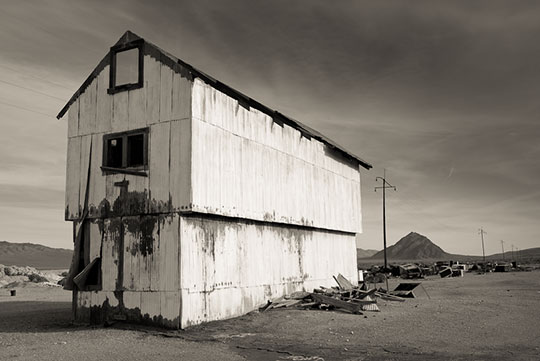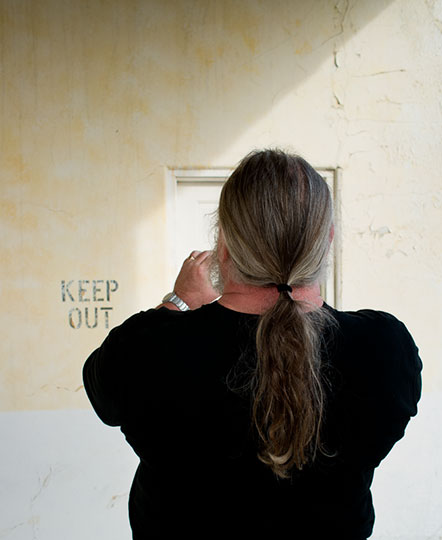
Take the 12.2 Megapixel Sony-fabricated sensor that’s likely the same one found in the Nikon D300, put it in a pocket-sized Leica-designed body with a Leica 24mm f/2.8 Elmarit lens, have someone else build it but complete the assembly and testing in Solms, Germany, and what do you have? TheLeica X1, if course.
I first became aware of the X1 back in August when I, along with a few other industry journalists, were invited to Leica’s headquarters and factory in Germany for a preview of the then as yet unannouncedLeica M9, and for some hands-on with the equally newLeica S2. I published several online videos of our tour, interviews and shooting experience with these two cameras, for which links can be found on the site’sHome Page. But, there was a third new camera, the X1, to which we were given a sneak peek. It still was in prototype form, but we all became pretty excited about it.
The X1 is now ready for testing. The production unit that I have still has pre-release firmware (0.72i), but Leica is confident enough of the camera that they provided me with a sample for testing in late October, without any caveats as to what I could publish. According to the company the X1 will become available world-wide in January, 2010.
Please note that while I go into quite a bit of detail on some topics, this is not intended to be an exhaustive report on every feature and function of the camera. Rather, I look at those aspects that I consider to be of greatest significance to photographers. This report is based on some three weeks of almost daily shooting with the X1.
Junktion Shed. Death Valley Junction, California. November, 2009Leica X1 @ ISO 100
____________________________________________________________________________________
Fit / Finish and Presentation
The X1 comes in beautifully presented packaging. Different than, but comparable to that of the M9. Not that this is relevant to its function as a photographic instrument, but anyone spending $2,000 for a pocket-sized camera is going to appreciate a bit of packagingbling.
The camera itself looks something like a miniaturized M9, with lots of traditional Leica design clues. This is no bad thing, because Leica adheres to a minimalist esthetic that is pleasantly at odds with the overabundance of buttons, knobs and menus found on all too many cameras these days.
Other than its lens the front panel is devoid of controls. There’s a small circular window which is used for low-light autofocus illumination, and that’s it.

The top panel has a hot shoe, a shutter release button surrounded by an activation lever, and an aperture dial and a shutter speed dial. Each of the dials also has an A position, which allows Aperture Priority, Shutter Priority, or full Program automation. In other words, there is no Mode dial, no silly scene modes, art modes, video, or other fripperies. This is a serious photographer’s tool.
I was not happy with the fact that these dials have no lock positions and are all too easy to spin off their intended settings. Since this is a camera intended to put in ones pocket, I did so. But, it was a rare time when it came out of my pocket that the dials were in their intended positions.
The lever around the shutter release has OFF, Single, Continuous and Self Timer positions. It’s a minor thing, but the index mark on the dial on my sample didn’t quite line up with the marked positions on the top plate on the camera that I had for testing. I’m not certain is this is a unit fault or typical.

The pop-up flash is very clever. Push down on what appears to be a large plain button and it appears. Press it down and it disappears. Nice.
My only concern on the top panel is that there are three tiny holes near the shutter speed ring that appear to be speaker outlets for the camera’s sounds. Because these are on the top panel it may be all too easy for rain water to enter the camera. I would have preferred it to have been on the rear panel instead.
The rear panel has a 2.7″ LCD of 230K pixels. It’s “OK“, but not great. There are better LCDs on the market, and I feel that for the money Leica is charging purchasers deserve something that’s both higher resolution and brighter.

The five buttons on the left are similar to the ones on the M9 and continue the minimalist Leica approach. The right-hand-side wheel and buttons are traditional in design but with one difference; the bottom button is for manual and AF switching. More on this shortly, as well as the manual focus wheel above it.
The base of the camera has a sturdy tripod thread that is NOT centered with the lens. This will irk those that want to shoot some types of panos, but is largely irrelevant for the rest of us. There is a latched cover which contains both the camera’s Li-Ion battery and SD card slot. On my sample camera the battery release sometimes didn’t allow the battery to pop out quite far enough when released, and this meant a bit of finger fumbling to extract it.
The X1’s menu structure is very straightforward. It is just four screens long, and scrolls continuously. Each item can be selected with the Right button and then an appropriate choice selected with the Up and Down arrows. No muss, no fuss.
There is one other small but well implemented item on the back panel, and that’s a small green LED just above the LCD screen. Its purpose is to let you know when the autofocus has locked on if the LCD is turned off and you’re looking through the accessory optical viewfinder.
This 36mm OVF will be available beginning in January at a price of $350. There will also be a small accessory grip available, and both can be seen in the product photograph at the bottom of this page.
The provided charger is small; appropriate for travel, but rather than a fold out plug provided by so many small camera makers, Leica provides a number of detachable plug adaptors for different countries. This is sensible and cost saving, I’m sure, but because the plug doesn’t fold, the way so many small chargers do, it is harder to pack than it should be. At this price point I don’t expect Leica to skimp on the little things.
I know that it’s only the slim North America and Japan market plugs that can fold away, but since these countries represent more than half of the world’s camera market it seems that a unique charger shouldn’t be too much of a hardship for the company.
Keep Out. Death Valley Junction, California. November, 2009Leica X1 @ ISO 100
____________________________________________________________________________________
The Lens
The X1’s lens is a 24mm f/2.8 Elmarit ASPH. With this sized sensor the lens becomes the equivalent of a 36mm focal length. As a matter of interest, the 24mm Elmarit for the Leica M9 series currently sells new at B&H Photo for $3,795, nearly twice as much as the entire X1.
This of course begs the question as to whether it is the same lens. The answer of course has to be,no, it isn’t. The lens on the X1 is autofocus and also quite a bit smaller than the Elmarit-M. It doesn’t have to cover full-frame, after all.
The answer to the question of the two lens’ relationship is that the X1’s lens is the same optical design as the M lens. Is it ground, centered and mounted with the same fanatical precision as the Elmarit-M? Likely not, given its price point. But, as we’ll see when we look at the camera’s overall performance, it really is stellar.
There is a removable threaded ring surrounding the lens, which because of its very deep thread likely appears to be intended for future lens accessories, though there is no indication from Leica at this time as to what these might be.
Finally, the lens comes with a snap on lens cover which needs to be removed when the camera is turned on, otherwise the lens can’t extend, which it does quite a bit, roughly doubling its length when extended.
Oh yes, the lens cap could do with a tether, similar to the one on the D-Lux 4.
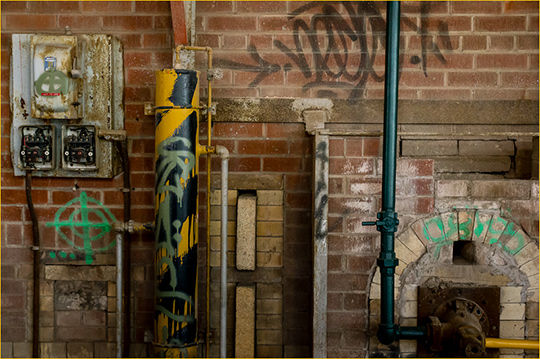
Pipes. Death Valley Junction, California. November, 2009
Leica X1 @ ISO 100
____________________________________________________________________________________
Stabilization?
There is an Image Stabilization setting on the camera’s menu, but it isn’t what you think. The X1 does not have either optical or sensor-based image stabilization. What Leica has implemented seems a bit strange, and here’s what the manual says about it…
The camera takes two pictures automatically in series with this function, one with a faster and one with a slower shutter speed (you will hear the shutter operate twice during the operation). Then, it takes the data of the two exposures and combines them into one with digital image processing.
• Therefore, please hold the camera steady until the shutter has released
the second time.• Due to the function using two exposures, it can only be applied with
static subjects.• Image stabilization is only possible with shutter speeds within the range
of 1/4s to 1/30s and sensitivities up to ISO 1600.
This seems to me to be far less useful that the IS found on other cameras, and almost seems to have been added so that a check-box can be ticked off. Frankly, if it only works when the subject is stationary, and when the shutter speed is very low, it’s of little practical value, at least to me.
____________________________________________________________________________________
The Shutter
This camera has one of the quietest shutters I’ve ever heard, or, as it turns out, not heard. In fact it’s so quiet that Leica has provided an electronic shutter noise which can be turned on as desired. There are three settings – Off, Low, and High. I’ve been told that the shutter sound is in fact synthesized from the sound of a Leica M3 shutter. Whatever.
But when the synthesized shutter sound is turned off the X1 is essentially silent . The same is true of many small camera with combined electronic and leaf shutters. There’s the slightest whisper of the lens’ leaf shutter opening and closing, and this is inaudible even in a quiet room to anyone except the photographer who has his or her ear close to the camera.
This is the camera that I would have died for in the days when I was shoot stills for movies, theater and TV productions.
Shutter Response
The X1’s shutter response is not instantaneous. There’s about a quarter second lag. I believe that the reason for this is that sensor is, of course, always live for LCD previewing. When the shutter is pressed the len’s leaf shutter needs to be closed, the sensor’s electronic shutter primed, the shutter opened and closed for the actual exposure, the electronic shutter closed, and then the sensor turned on again for previewing.
The initial steps prior to exposing the sensor take a finite amount of time. Under normal shooting circumstances this small delay is masked by the autofocus, which, as with almost all contrast detection AF systems, takes a moment, or two, or more, to lock focus. It’s therefore only when shooting in manual focus mode that the X1’s minor shutter delay will be noticed. My guess is that for 99 out of 100 shooters this isn’t anything to be concerned about.
But, it does raise the question as to how some other makers, like Canon with their recently introduced S90 (reviewed here) can make a small camera with an electronic / leaf shutter that has essentially zero lag, and Leica can’t.
____________________________________________________________________________________
Autofocus and Manual Focus
Autofocus on the X1 works comparably to other contrast detection AF systems. In other words, a lot slower than the phase detection systems found on DSLRs. It’s also not in the same league as the system found in the Panasonic GF1, which many will see as a prime competitor to the X1, and which I’ll have more to write about below.
Now – don’t misunderstand. I’m not saying that the X1’s AF is poor. It’s just that it’s on a par with just about every other small camera that uses Contrast Detection – about one second from first touch to shutter release. This would be less of a concern if it wasn’t for the fact that the X1 bears the Leica red dot and looks like an M. The expectation is therefore created that it will be a suitable “street shooting” camera, which regrettably, because of its slowish autofocus, it’s not. More on this anon.
The lower rocker button on the multi-controller provides access to three settings – AF, AF-Macro, and Manual Focus. When you select AF, you can then press the second button on the left of the LCD screen (Delete / Focus) which then provides selections for Single Center Point, 11 Point, Spot Focus, Face Detection and manually adjusted spot. It’s quite versatile.
There is also a High Speed version of the center point and the 11 point, which is described in the manual thusly…
The high speed version offers faster focusing. It can result in a less fluent monitor image though, especially in the case of fast-moving subjects. Therefore, if the best possible monitor image is the highest priority, you
should prefer the normal version.
In some brief comparison testing I couldn’t see much difference between the normal mode and the High Speed mode, either in terms of performance or monitor image quality.
Manual focus, when selected, is actuated with the thumb wheel on the upper right rear of the body. When the wheel is turned a magnified view is displayed in the center of the screen along with a focusing scale in feet and meters.
I regard the manual focusing as useful for setting infinity (such as when shooting through an airplane window) or for other times when AF doesn’t work well. Otherwise it just doesn’t seem as precise to me as it should be, and I almost always used the X1 in single point AF mode. And if Leica is looking at ways to improve its focusing for future models, may I suggest a hyperfocal mode? Wouldn’t it be nice to be able to set the aperture as desired while watching the onscreen focus indicator show the hyperfocal range and setting? This would make the X1 a much more versatile street shooting camera. As it is now, the AF is simply too slow for most street shooting applications where speed and discretion are paramount, and the manual focusing is only suitable for slower more contemplative work. Even then, because of the coarse screen, achieving critical focus manually is problematic because it’s very hard to judge on screen. For these reasons some type of hyperfocal or zone focusing system is called for.
There is also an AF Macro mode, which allows focusing down to a distance of about 12 inches, which then provides a field of view equivalent to about the size of a 15″ monitor screen at normal viewing distance. Not really all that macro, especially when compared to the ultra-close up capability of small sensor pocket cameras.
____________________________________________________________________________________
In Use
The Leica X1 is quite fluid in use. The top control wheel design works well, and switching from Program mode to A to S becomes quickly intuitive. Both the aperture and shutter speed, either set manually or automatically are displayed below the image area, and a live histogram is also available. Focusing mode, metering mode, battery condition and frames remaining are all also displayed.
ISO is also displayed if manual ISO is set, but if Auto ISO is set the setting chosen by the camera is not displayed. I regard this as a major omission. I don’t mind handing over ISO responsibility to the camera when I’m in the mood for a fully automatic camera. But, I still want to know what the camera is choosing on my behalf. You have to actually take the shot and then review it with full data display to see what the camera has chosen. This really is annoying and needs to be fixed. Hopefully in a future firmware update.
One more niggle is that there is no ability to turn the camera on in a review-only mode without the lens needing to be extended and having to therefore remove the lens cap. This is something found on other cameras, is convenient, and would be appreciated in a future firmware update.
____________________________________________________________________________________
Files and Processing
Of course the X1 shoots raw. In fact it can shoot, by my measurement, six frames in two seconds, until the internal buffer is full and it has to pause to download to the card. This is excellent performance for a small camera shooting such large files.
It then takes a further 10 seconds for these six files to be downloaded to the card (in my case, a 16GB Sandisk Extreme III). Again, excellent performance.
Like the Leica M9 and S2 the X1 shoots raw to the DNG format, which means that the files can be opened in any DNG compatible raw processing program. This includes Adobe Camera Raw / Photoshop, Adobe Lightroom, and Phase One’s Capture One. Indeed a full copy of Lightroom 2.5 is available for free to registered X1 owners, and of course the currentLightroom 3 Betais available as well to anyone.
One has the choice of four file type settings…
a. JPG Super fine
b. JPG fine
c. DNG+ JPG Super fine
d. DNG+ JPG fine
Strangely, there is no setting for raw only. This is the only camera that I can recall where I have not been able to just shoot raw. I wonder why this is the case? It’s not a big deal, because one can set Lightroom to ignore the JPGs, but they do take up space on both the card and ones hard drive.
____________________________________________________________________________________
Image Quality
Image quality from the Leica X1 is exemplary. The quality of the sensor and the in-camera processing is as good as I’ve seen from just about any camera. In terms of overall IQ it puts every other small camera that I’ve ever worked with to shame, and challenges many DSLRs.
The web simply isn’t a good place to do the nit-picking evaluations that so many folks love. Only large prints appropriately viewed tell the tale properly. In this regard all I’ll add is that by all measures the X1 produces prints up to and including 13X19″ in size that at least in terms of noise are essentially indistinguishable from those shot with my Leica M9 and a 35mm F/1.4 Summilux, a system worth over $10,000. In terms of noise that’s the case up to ISO 1600, where the M9 has a small but noticable noise advantage, as seen below in shots taken at each camera’s highest ISO setting.
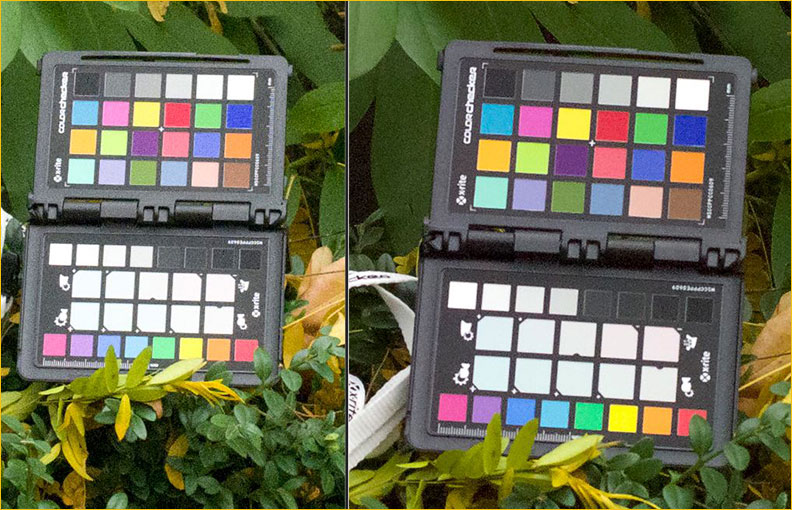
X1 and M9 for Evaluation of Noise Only. ISO 3200 and 2500 (each camera’s maximum) respectively
Of course the M9 is an 18MP camera without an AA filter working in 14 bit mode, while the X1 is a 12MP 12 bit camera with an AA filter. Nevertheless the X1 aquits itself very well.
____________________________________________________________________________________
Compared to the Panasonic GF1
The Leica X1’s most obvious competitor is the Panasonic GF1. Before delving into how they shape up against each other in the field, here’s a brief feature and spec comparison.
These no question that the X1 is smaller and lighter. Not by a huge amount though, as both can be carried comfortably on a wrist strap or in a jacket pocket. The X1’s sensor is 373 sq mm, while the GH1’s is 243 sq mm, a difference of some 50% in favour of the Leica. Both sensors are huge though by pocket camera standards (The Canon G11’s sensor, for example, is just 43 sq mm in size).
The trade-off game continues. The GF1 has interchangeable lenses, and the kit 20mm f/1.7 is a stop and a half faster than the X1’s fixed f/2.8 Elmarit. The GF1 also has an available accessory electronic viewfinder. For those that need it the GF1 also has HD video capability, while the X1 has none. And finally, the GF1 with 20mm f/1.7 lens is half the price of the X1, a full thousand dollars less.
Are there other contenders? The Olympus E-P1 just didn’t impress me, though it’s similar in concept to the GF1. Maybe the upcoming E-P2 will play a stronger hand. The fascinating new Ricoh GXR along with Canon and Samsung’s large sensor pocket cameras are still largely unknowns.
There is also the Sigma DP2, which along with its predecessor the DP1 (see my review) is the granddaddy of the large sensor / small camera category. But, as interesting as it is (was), its real-world resolution is simply too low to be competitive and the design has lots of other issues that make it a bit behind the times.
So – what about image and lens quality? How do the X1 and the GF1 cameras compare?
The only aspect that one can show online is noise and optical aberration. There were no significant aberrations to be seen from either camera, so noise is what’s left.
At ISO 100 and 200 the two cameras are extremely close at 100% on-screen, with the X1 showing somewhat smoother surfaces in dark areas. They are indistinguishable in terms of noise in prints up to 13X19″ at these speeds though, and I therefore haven’t bothered showing such samples below. The differences do start to become visible at ISO 400, and are illustrated in the samples below. All processing was done in Lightroom 3 Beta with sharpening and noise reduction turned off.
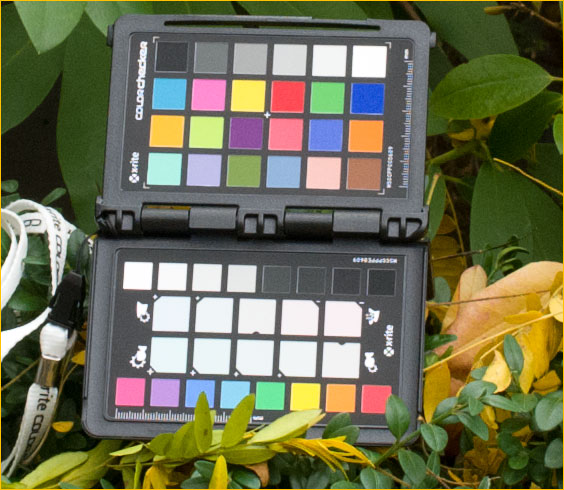
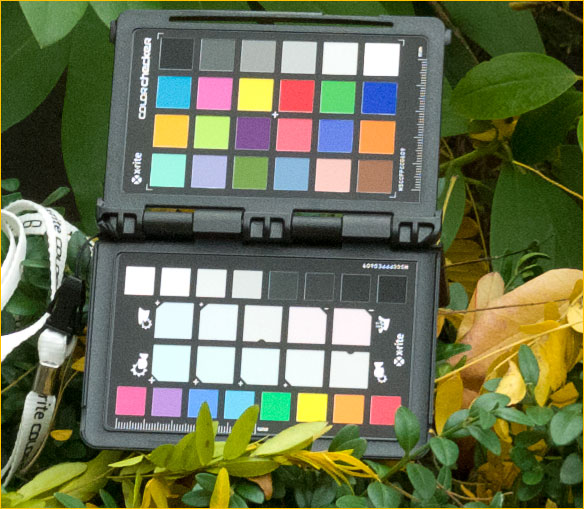
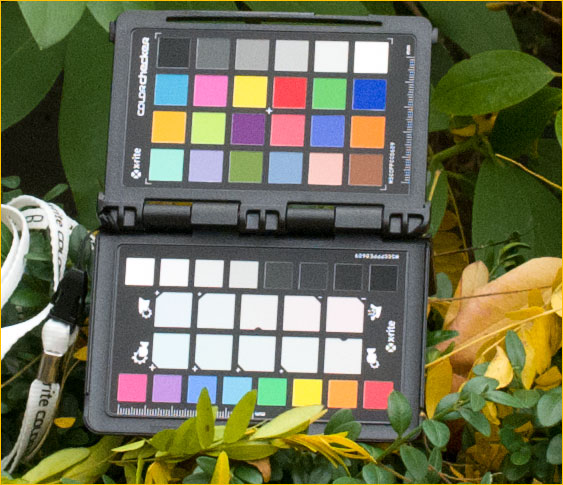

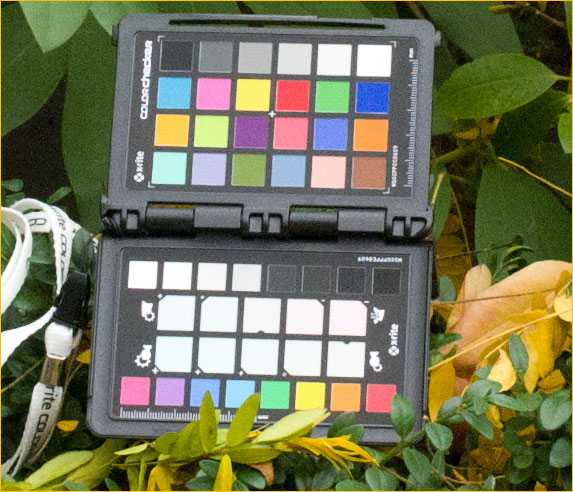
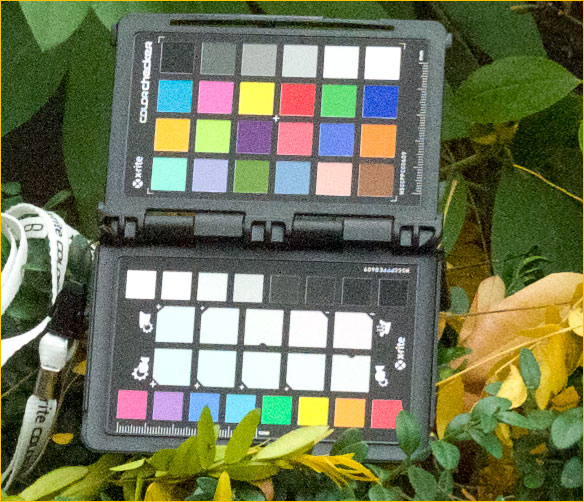
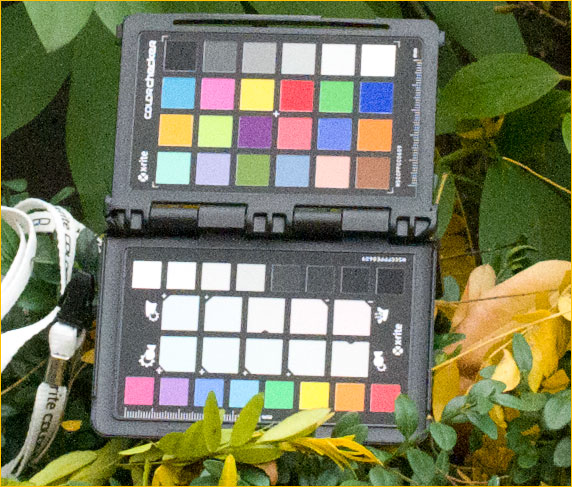

There isn’t much to choose between them up to and including ISO 800. The small noise advantage that the X1 has at ISO 800 isn’t visible in prints. At ISO 1600 and 3200 the X1’s superior noise performance becomes visible not only on-screen but in prints. I’d judge it to have a bit more than a one stop advantage over the GF1.
The X1’s nose is exclusively Luminance, even at ISO 3200, and can be easily reduced with a bit of NR, though with a small loss in resolution, of course.
____________________________________________________________________________________
The Bottom Line
Now we get to the hard part. We have established that the Leica X1 handles moderately well – but is somewhat constrained by pedestrian autofocus. We’ve established that it is beautifully designed, and for the most part well constructed, though the LCD is somewhat under-speced when compared to those found on many other current cameras.
We have found that the image quality is exceptional. Fully the equal of many DSLRs. Noise performance is exceeded by only a handful of much more expensive and much larger cameras. The 24mm Elmarit (36mm equiv) is a very fine lens, and the camera’s shooting speed in raw is nothing short of superb.
All of this taken together makes a compelling case for the X1, but with two considerations – price and the competition.
At some $2,000 retail (at least in the U.S.) the X1 is undoubtedly the most expensive small fixed-lens digital camera ever made. It also arguably has the finest image quality of any camera of its size and type, which goes a long way toward making the price palatable to those that can afford it. The camera is also beautifully designed and manufactured. But potential buyers should be aware that it’s not a scaled down M series Leica in terms of build, fit, or finish. It’s very good, but not world-class the way that the new M9 and its predecessors have been.
Since this is a competitive marketplace one of course has to consider any camera in terms of its competition, especially with regard to size, performance and price. I’ve selected the GF1 as the X1’s prime competitor in today’s market.
Yes, the Panasonic GF1 is heavier and a bit bulkier with its 20mm pancake lens attached. But the lens is a stop and half faster than the X1’s, and of no small advantage is its interchangeability with a range of Panasonic and Olympus Micro Four Thirds lenses, as well as an almost infinite range of other brand and mount lenses via adaptors, including Leica’s own M lenses.
At the equivalent of 36mm the Elmarit will not be appropriate for all types of shooting. A fixed focal length lens rarely is. In many photographer’s view though this is about the ideal focal length for documentary and street shooting. But, as previously mentioned, the X1’s run-of-the-mill AF speed means that the camera isn’t all that suitable for this task. It just doesn’t have the reflexes – no pun intended.
When it comes to sensativity the GF1 isn’t as good as the X1 at maximum ISO, but it is comparable up to and including ISO 800; it also has an optional electronic viewfinder for eye level shooting, and video capability for those that want or need it. The GF1’s autofocus is also significantly better than the X1’s. Oh yes, and it’s half the price of the X1.
I am not trying to knock or disparage the X1. It’s a fine picture taking machine. If it had come to market a year or so ago it would have taken photographers by storm. But in today’s marketplace there is tough competition, both in terms of price, features and performance, and to ignore the competition is to have ones head in the sand.
I know that this report on the Leica X1 will annoy and dismay some readers because I don’t find it to be as exceptional in its usability as in its image quality. This lack of complete enthusiasm may confuse some, especially since it is well known that I have been a life-long Leica user, and an enthusiast for the brand. But, I have to call them as I see them. In the end the X1 will be a terrific camera for those that are looking for ultimate image quality from a fixed lens pocket camera, and for whom the AF and manual focusing issues aren’t found to be a hindrance for their type of shooting. For others, maybe not so much.
Will I be buying an X1 myself? The answer is, likely not. I already own a Leica M9 and also a Panasonic GF1. My needs in terms of what both of these cameras have to offer have already been met. But, if I didn’t own both I’d be tempted, though the rapid proliferation of cameras in this new market segments means that available alternatives are growing in number every month.

Last Gas. Death Vallery Junction, California. November, 2009
Leica X1 @ ISO 100
____________________________________________________________________________________
Caveat
It should be noted that though the X1 that I tested is a production camera, it has pre-production firmware. This means that it is possible that a number of the areas of concern which I have identified may be addressed prior to cameras shipping in January, 2010. If your interest in the camera is more than academic you really should visit a dealer once cameras are available, and check one out for yourself before making a decision one way or the other.

____________________________________________________________________________________
UPDATE
15 Nov, 2009
I published this review while I was on a shoot / workshop in Death Valley, CA. I had internet access, but little time to read emails and respond to people’s comments until I returned home a few days later.
One thing that I heard was that people were dismissing the X1 as a potential street shooting camera because of its slow autofocus. I had written, “…the X1’s run-of-the-mill AF speed means that the camera isn’t all that suitable for this task.” I believe that to be true, but with a caveat which I should have added. That is particularly if one is shooting with autofocus. It has been pointed out to me that many people do this type of shooting using zone focusing (which I do as well with an M series), and they are quite right. If you’re not using AF, then the X1 can do the job as a street shooting camera, especially if you have an optical viewfinder attached. I don’t see myself shooting that way with the X1, but others definitely may.
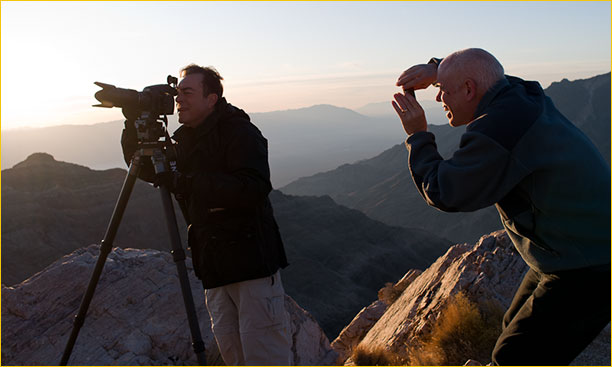
Mark Dubovoy and Bill Atkinson at Aguereberry Point, Death Valley
Leica X1 @ ISO 100
I also spoke with Sean Reid when I got home, and he pointed out that he has discovered what he agrees is a problem with manual focusing on the X1’s LCD screen. I had put it down to the somewhat coarse screen that doesn’t allow one to be able to decide exactly when focus has been reached.
Sean said that what he has discovered is that the camera changes the aperture on its own, seemingly arbitrarily, even when set to a wide aperture. This means that you likely will be trying to focus using the screen, assuming that it’s wide open (which it either should be for focusing, or if you’ve deliberately set it that way), but instead the camera may have the aperture at f/5.6. Strange.
The X1 does stop down to the correct aperture (the one set on the dial or chosen by the X1’s metering system) when the shutter release is pressed but the camera sets itself to various apertures up until that time, perhaps trying to control the light levels sent to the sensor for the LCD’s live view
Hopefully this along with some of the camera’s other small operational issues can be addressed in firmware prior to first shipment in January.
____________________________________________________________________________________
Sean ReidatReid Reviewshas also just published his review of the Leica X1. Sean has a unique perspective on testing cameras and I recommend his reviews.Reid Reviewsis a subscription site.
____________________________________________________________________________________
November, 2009
You May Also Enjoy...
Bangladesh Regsitration
This form will register you for theJanuary, 2005 Bangladesh Workshop. By completing and submitting this form you agree to participate in this workshop under the
Fancy Graphics Galore
By Gerard Kingma Boy, Norman Koren certainly has a helluva lot more brain cells in his mathematical drawer than I do. Recently I bought Mr.

